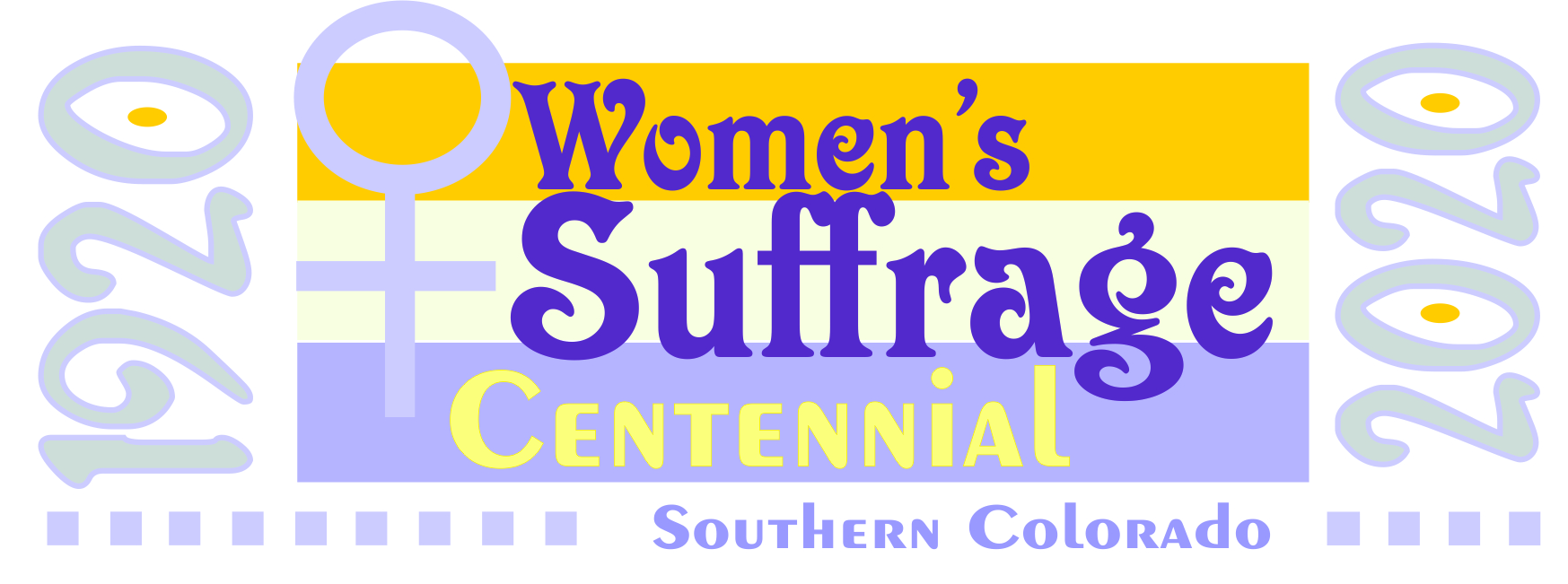By Anna Brownlee
“To oblige a lady we publish a communication on the subject of woman suffrage in our issue to-day. We have no sympathy whatever with the movement and are of the opinion that nine-tenths of our readers are in the same position. When the dear ladies are willing to accept the responsibilities of citizenship as well as the privileges perhaps we will think differently.” Colorado Daily Chieftain, August 16, 1877
This commentary introduces an editorial written by “A San Juan Woman” rebutting an article from two weeks earlier about the failed suffrage lecture tour of Margaret and John Campbell in the San Juan valley. The editorial complains that the Chieftain had grossly misrepresented the number of people in attendance, the general feeling among the attendees, and the suffrage movement in Colorado entirely. This statement from the paper and the complaint by the writer demonstrate the tone of the paper and how it depicted the suffrage movement in its pages in the 1870s.
The paper was very much against women’s suffrage, and while few women from Colorado were noted or named in the paper during this period, the Chieftain followed the activities of few Colorado women who gave lectures in Pueblo and other towns in southern Colorado. The paper viewed all suffrage figures with great suspicion, and represented suffrage as an unwanted element from liberal Denver and beyond being pushed onto the good people of southern Colorado. Although women’s suffrage was on the ballot in 1877, the Colorado Daily Chieftain often didn’t mention the upcoming vote when covering suffrage activity. When it did, it framed the topic as a north vs. south issue, with the south uninterested in allowing the political schemes of northern Coloradans to control the state.
The tone used to talk about suffrage activities was either mocking or dismissive, and the suffragists were framed as unfeminine, unnatural, shrieking, shouting, uneducated, and unrefined. National suffragist Margaret Campbell was one of the few women mentioned by name in the 1870s. She and her husband moved to Colorado to help promote women’s suffrage and the Chieftain strongly disliked her, describing her as “shrieking” and “whose proper sphere would seem to be a stall in a fish market.” Her husband John was, “henpecked,” and portrayed as weak and cowardly against his strong willed wife.
A Colorado suffragist that the Chieftain reported on was a “Mrs. Shields” of Colorado Springs, who was Mary T. Shields the co-founder of the Colorado branch of the Women’s Christian Temperance Union (W.C.T.U.), got a few mentions in the paper. She mostly spoke in small gatherings at local churches. She was known to speak in a gentle motherly fashion, and the Chieftain was a little softer on her, “Those present were at least convinced by her unassuming conversation like discourse, that it had now become their duty to consider the question…These only showed her to be a sensitive woman who wished to perform to the best of her ability an entirely new and not altogether agreeable duty.” (Colorado Daily Chieftain, 1877).
However, it was also just as quick to dismiss her. “Mrs. Shields lectured on woman suffrage last night in the Methodist church to a good audience composed mostly of ladies, as the question discussed is of little interest to our readers and of none whatever to ourselves we refrain from details.” (Colorado Daily Chieftain, March 20, 1877),
and, when Mary Shields used scripture for the cause, the Chieftain continued
“She carries woman’s political equality and religion all in the same bundle …The Idea of attempting to reconcile the minds of a voting populace in the cause of woman suffrage by the introduction of Paul’s writings or the Mosaic law, is mighty thin, and presumes a great deal upon the ignorance of a bible reading people” (Colorado Daily Chieftain May 29, 1877)
so there really was no winning for any part of the suffrage movement as far as the Chieftain was concerned no matter how or by whom the message was delivered.
They were right, there was no winning in 1877. The suffrage vote failed terrifically, and the Chieftain reported the returns as they came in over the course of several days in October, 1877, along with crowing commentary,’
Woman suffrage has been defeated by ten thousand majority, which is an evidence to the good sense and sound judgment of the people of Colorado.” (Colorado Daily Chieftain, October 12, 1877)
And the paper also believed the issue was settled for good in Colorado.
“After all of this effort what was the result? An overwhelming defeat, which ought to kill the movement for all time.” (Colorado Daily Chieftain, October 5, 1877).
Suffrage for women would not succeed in the 1870s, and the Chieftain would go quiet on its coverage of Colorado suffrage activity, but the seeds had been planted and the work went on.
ChangChange Over Time 1870s
Change Over Time 1880s
Change Over Time 1890s
Author and Process of Change Over Time Essays
